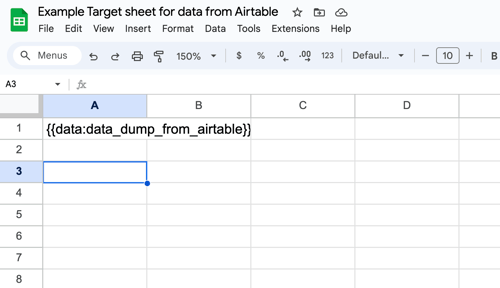This guide explains how to automatically export data from Power BI easily and efficiently. Power BI...
Automatically sync Airtable to Excel or Google Sheets
Airtable is a powerful tool for data collection, management, and storage. However, teams that use Airtable often want to further examine and manipulate the data in a spreadsheet. To do this, users have to manually export Airtable data into a CSV file. The process is time-consuming, laborious, and error-prone. It’s also nearly unworkable when you need to refresh the data on a regular basis. But that doesn’t have to be the case. The following guide will demonstrate the best way to connect Airtable to a spreadsheet for recurring, automated data exports.
Slideform captures your entire Airtable Base for use in reports, presentations, and spreadsheets.
Why Extract Data from Airtable?
Client-facing teams can enhance their analysis by leveraging Airtable data. Often, data in Airtable are cleaned and structured, and your Airtable Base may pull together KPIs that are blended from multiple data systems. Client-facing teams can make use of this robust, enriched data in reports and custom analysis.
In order to harness the underlying data, client-facing teams often extract the data in a CSV file format. But this process is highly manual, and users often need to further filter and refine the data. This process slows down sales and reporting efforts and leads to data errors.
Client-facing teams need a way to automate Airtable data exports into spreadsheet platforms such as Google Sheets and Excel. Read on to learn how to achieve this with Slideform.
How to automatically pull Airtable data into a spreadsheet
- Connect your Airtable
- Create a spreadsheet to receive the data
- Match data to placeholders in the sheet
- Schedule the automation
1. Connect your Airtable
First, create a new personal access token in Airtable, then, in Slideform, add the Airtable data source and provide the requested credentials. For more details on setup, see How to Connect A Data Source.
Slideform extracts the data in your Base and makes it available to embed into your spreadsheet, reports, or presentations. Once the Base is connected, you can also preview, filter, and manage your Airtable data from the Slideform Data Sources page.
2. Create a spreadsheet template

With Slideform, you can specify filters and layout of the data and also pull data from different data sources into the same sheet!
Save the template, either as a Google Sheet in your Google Drive workspace, or as an Excel file. Then upload it to Slideform as a New Project.
3. Match data to placeholders
The final step is to match each placeholder pragma to the appropriate data. Set the data source for each pragma in the Configure Data section of the project.
Slideform can do complex data filtering and lookups too! For more information see: How to Configure the Data Mapping. Save the data configuration once all pragmas are set.
In this example, I'll select the entire Base table, but I could also select specific columns to pull in.
4. Schedule the automation
Once the data and template are connected, you can trigger a data pull to the spreadsheet anytime by clicking Generate. Or you can set a schedule to run the export.
In Settings you have the option to create a new output sheet or Excel file each time, or to overwrite an existing Google Sheet. Send the data to a specific Google Drive directory or SharePoint site.
This is an example of the Google Sheet output from my Airtable:

With an automated workflow, you can pull in the data you need automatically for further analysis and manipulation. Add to the workflow by importing your spreadsheet data directly into reports and presentations.
Did you know? Slideform can insert data, charts, text, and images into your Google Slides and PowerPoint too!




